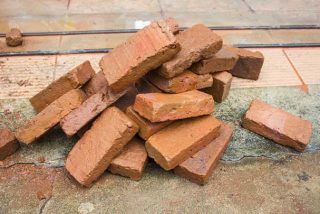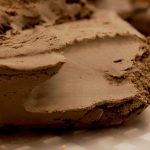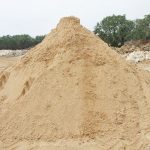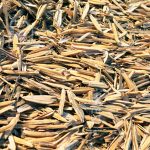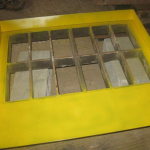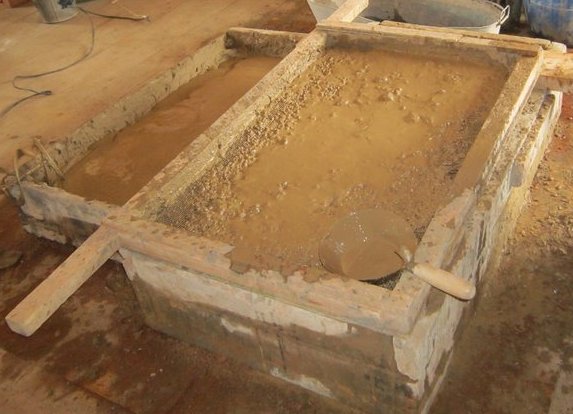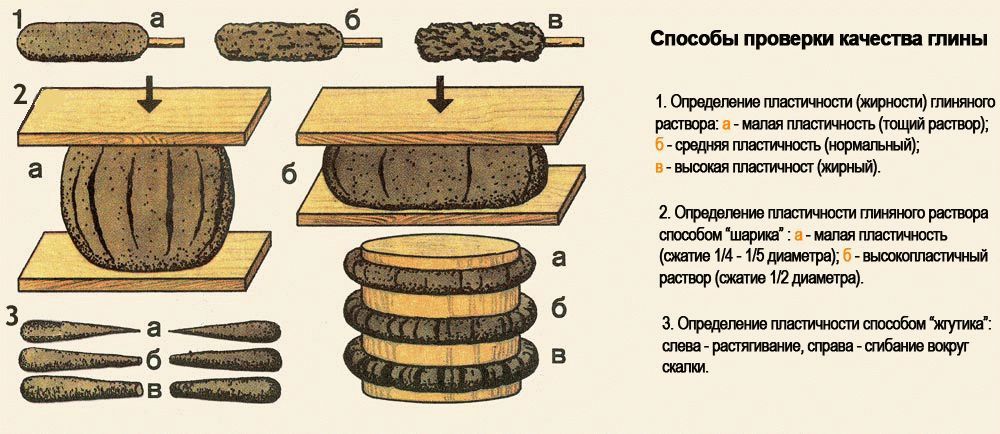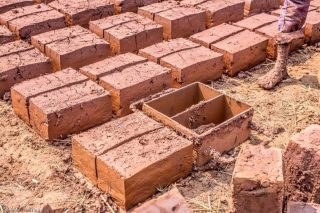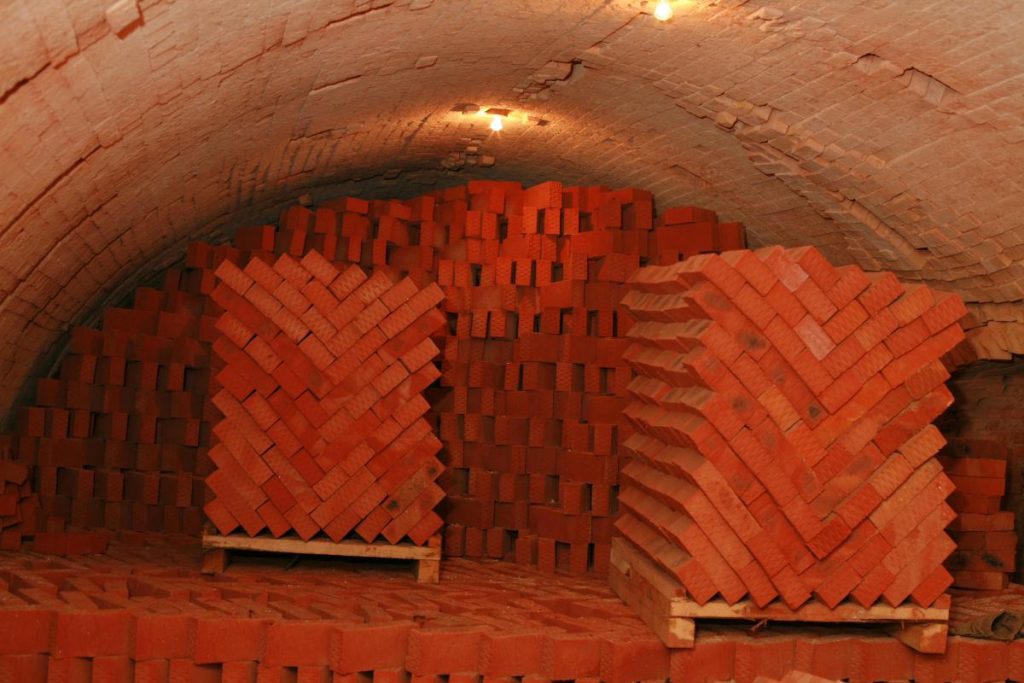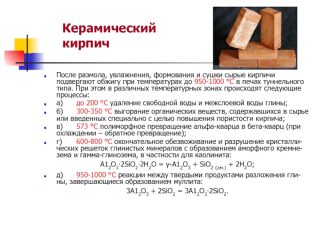The building material for the construction of a building, even a residential one, can be made by hand. The easiest and most convenient way to make clay bricks is: the raw materials for it are quite affordable, the technology is simple, and the costs are minimal.
Self-made bricks at home
Self-production produced according to the same scheme. However, the conditions for forming, drying and firing are different. The material obtained at home cannot boast of such low porosity and strength as the industrial one, but it is more than suitable for the construction of utility rear outbuildings.
To obtain a brick from clay with your own hands at home, you will need the following materials and tools:
- clay - quarry, refined, of sufficient fat content;
- sand - river, sifted, with granule sizes no more than 3-5 mm;
- additional filling - husk from grain crops, peat crumb;
- brick mold - usually made of wood, although metal molds are more durable;
- brush cutter, pick, scrap for the development of dense layers;
- bayonet shovels for extracting clay from loose rock, pitchforks with frequent teeth;
- scoop, scraper, pusher for compacting the mixture;
- the flooring on which the forms are located.
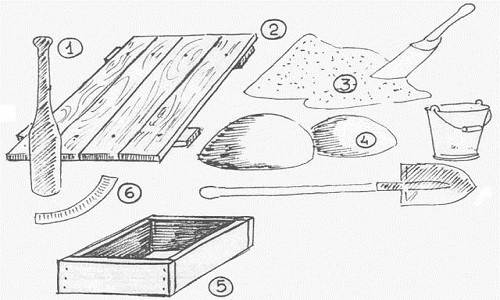
You need a kiln to fire bricks. It is built in a variety of ways. Both a full-fledged brick structure and a device made of a metal barrel are used. It depends on the scope of work.
What kind of clay can you take for red brick
The main raw material is brick clay, quarried... It is better to choose a deposit located close to the site. Take sand and clay in a dry place. Clay is transported in wheelbarrows, stored on a wooden deck in cones, up to 1 m high.
You cannot take clay with pebbles, with small pebbles, as well as with white inclusions - carbonates. Therefore, the raw material is preliminarily crushed and sieved through a sieve.
- The clay is put into troughs and soaked in water. The liquid is topped up gradually, in 2-3 stages. The clay is not mixed, but made to become soaked.
- Clay chaff is soaked for at least 3 days. At this time, the trough is covered with a foil so that the water does not evaporate.
- After aging, the raw materials are checked for suitability. For bricks, take non-greasy clay - the amount of added sand is no more than 3-5%. Adding peat, sawdust, husk to the mixture reduces fat content.
Determination of the fat content of clay
500 ml of clay is poured with water until it absorbs all the water and does not stick. The mixture is made ball with a diameter of 4-5 cm and flatbread 10 cm in size. Samples are dried for 3 days and then tested for strength. The ball is dropped from a height of 1 m: if it does not crack or crumble, the clay has an optimal fat content. If it cracks - too oily, if it bursts and crumbles - skinny.
After drying, a cake made of too fatty clay becomes covered with cracks, from a normal one - it remains unharmed, from a skinny one - it crumbles.
They also resort to more complex method... The original clay is mixed in different proportions with water: 500 ml of clay and 250 ml of water, clay in half with water, and so on. A total of 5-10 samples are made. After drying, some of the balls are examined, and some are dropped from a meter height. This method of assessment takes more time, but is convenient because in the end, the foreman immediately establishes the best ratio of water to clay.
Brick production technology
Making bricks requires space. For this, a flooring is built. It is not recommended to dry the stone in the open sun: the material dries unevenly, the risk of being exposed to rain remains.
Mold making and molding
Do it yourself as a form wooden or steel boxes... For the first, you will need boards with a thickness of 20-25 mm and plywood. Metal rivets from an iron sheet.
Clay shrinks during drying, so the dimensions of the template should be larger than the expected dimensions of the brick. For a block with dimensions of 250 * 120 * 65 mm, you need a form with dimensions of 260 * 130 * 75 mm.
Templates can be collapsible and non-collapsible... The former are more convenient, since they allow you to remove the product without the risk of damaging it.
- To keep the inner surface of the mold smooth, it is lubricated with oil, whitewash or water. A layer of sawdust and sand is poured onto the bottom.
- The clay is placed inside the mold, tamped with a shovel. As the raw material shrinks, add the clay again until it fills the box to the brim.
- The excess mass is cut off with an iron or wooden strip.
- The surface is smoothed and stripped. Raw clay bricks are "dried" in the air for 1–2 hours. The process is considered complete if, when pressed, no traces remain on the surface of the raw material.
Forming can be accelerated by using a simple auger press.
Allowed and another variant... They make templates for several bricks - in the form of a thick plate. In this case, after drying, the layer will need to be cut into blocks with a string.
Drying
Bricks are left to dry in special sheds or under a canopy... Products are placed in bags of 6-8 rows in height. Each row is sprinkled with sawdust or sand. The bottom row is set on a poke in order to achieve uniform drying of the entire package.
The bricks are dried in a closed dry room for 3 days, then the pallets are transferred to a ventilated area protected from the sun.
Drying is carried out at an outside air temperature of at least +10 C.
Burning
Raw brick fired in ovens... It is better to use an analogue of a tandoor for this, but you can get by with a barrel stove. You cannot burn bricks on a fire.
Firing begins with the masonry in order to achieve uniform blowing of each brick with flue gases. The stone is laid out according to a special scheme. The sequence is determined by the dimensions of the oven. The requirements are as follows:
- packing density - stacking during firing, is 220–240 pcs. nor 1 cubic meter m;
- up the density is allowed to increase up to 300 pieces in 1 cubic meter. m;
- the first 4 rows are laid according to the "garden legs" scheme - sprawling with a herringbone;
- the next 4 rows, if the height of the furnace allows it, are laid in the same order, but at a smaller distance from each other and with a turn at a certain angle;
- the raw is folded in columns, between which there is a distance of 8-10 cm.
Setting up a barrel or small oven is much easier. Here, the raw is laid in rows with an offset.
- The first is drying, removing internal moisture. It is carried out at the lowest temperature - + 150 ° С. It ends when condensation ceases to appear on the upper surface of the masonry. Drying takes about 9 hours.
- In the second stage, the furnace is heated so that a flame appears on top of the furnace. In this case, the lower stones become yellow, and the upper ones acquire a dull red tint.
- At stage 3, the flame is extinguished, the firebox is laid with bricks and covered with clay. The oven cools down for 6 hours.After that, the front wall is disassembled and the brick is removed from the fired clay.
The uniformity of firing depends on the density of the charge. It is rarely possible to determine the correct scheme from the very first time, so it is better to make trial batches small.

Production safety rules
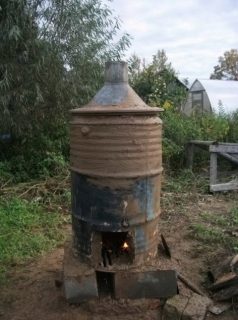
Clay brick making involves the use of open sources of fire. Security measures must be strictly observed:
- the oven is equipped in an area where the maximum visibility is provided;
- position the structure at the required distance from wooden buildings and objects, green spaces and fences;
- control the cooling rate and temperature in the furnace during the entire operation;
- restrict access to the playground for children and pets;
- do not open the oven ahead of time;
- during operation do not touch its surface.
Keep a first aid kit handy to prevent injury.

